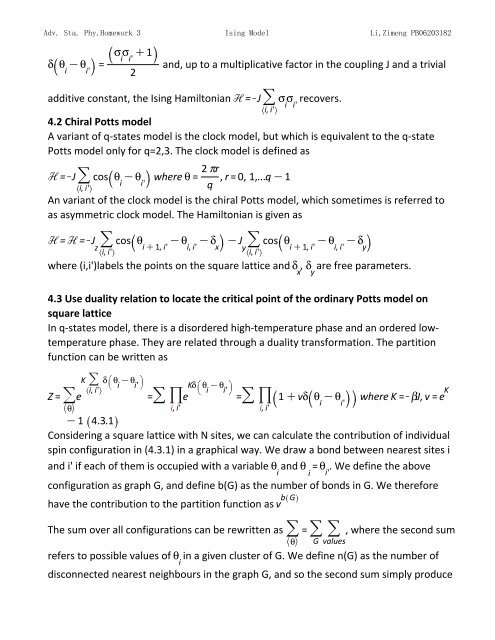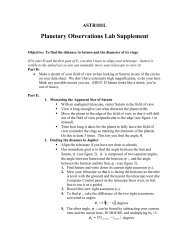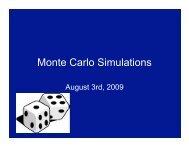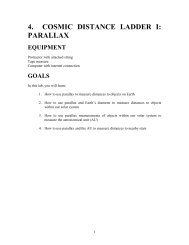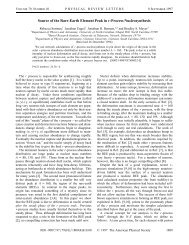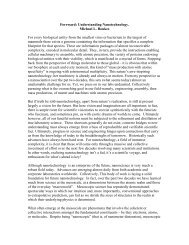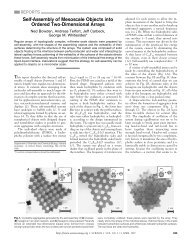Topics in Statistic Mechanics
Topics in Statistic Mechanics
Topics in Statistic Mechanics
You also want an ePaper? Increase the reach of your titles
YUMPU automatically turns print PDFs into web optimized ePapers that Google loves.
Adv. Sta. Phy.Homework 3 Is<strong>in</strong>g Model Li,Zimeng PB06203182<br />
and, up to a multiplicative factor <strong>in</strong> the coupl<strong>in</strong>g J and a trivial<br />
additive constant, the Is<strong>in</strong>g Hamiltonian<br />
recovers.<br />
4.2 Chiral Potts model<br />
A variant of q-states model is the clock model, but which is equivalent to the q-state<br />
Potts model only for q=2,3. The clock model is def<strong>in</strong>ed as<br />
An variant of the clock model is the chiral Potts model, which sometimes is referred to<br />
as asymmetric clock model. The Hamiltonian is given as<br />
where (i,i')labels the po<strong>in</strong>ts on the square lattice and<br />
are free parameters.<br />
4.3 Use duality relation to locate the critical po<strong>in</strong>t of the ord<strong>in</strong>ary Potts model on<br />
square lattice<br />
In q-states model, there is a disordered high-temperature phase and an ordered lowtemperature<br />
phase. They are related through a duality transformation. The partition<br />
function can be written as<br />
Consider<strong>in</strong>g a square lattice with N sites, we can calculate the contribution of <strong>in</strong>dividual<br />
sp<strong>in</strong> configuration <strong>in</strong> (4.3.1) <strong>in</strong> a graphical way. We draw a bond between nearest sites i<br />
and i' if each of them is occupied with a variable and . We def<strong>in</strong>e the above<br />
configuration as graph G, and def<strong>in</strong>e b(G) as the number of bonds <strong>in</strong> G. We therefore<br />
have the contribution to the partition function as<br />
The sum over all configurations can be rewritten as<br />
, where the second sum<br />
refers to possible values of<br />
<strong>in</strong> a given cluster of G. We def<strong>in</strong>e n(G) as the number of<br />
disconnected nearest neighbours <strong>in</strong> the graph G, and so the second sum simply produce


